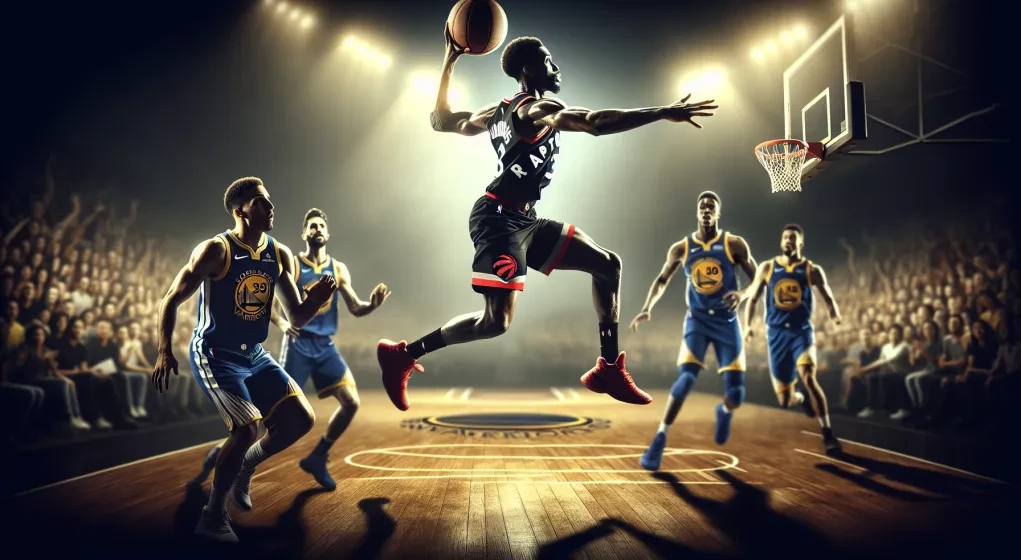As the basketball world turned its gaze toward the Great White North, the torrential shift in the Toronto Raptors’ strategy sent ripples through the realm of hoops. The dispatch of OG Anunoby was initially seen as a maneuver to acquire the promising talent of Immanuel Quickley, yet it was RJ Barrett who proved to be a revelation, a stroke of serendipity breathing new life into Toronto’s offensive prowess.
Instilling a newfound sense of dread in their adversaries, the Raptors, with Barrett’s inclusion, metamorphosed from a run-of-the-mill platoon to a genuinely formidable force on the hardwood. The once-average demeanor of their attack was now perceived as nothing short of thunderous — a fearsome ensemble striking chords of dominance wherever they roamed.
It was against the battle-hardened Golden State Warriors, fronted by the sharpshooting maestro Steph Curry, that Barrett’s ascension crystallized. With the basketball world watching, the young prodigy crafted a narrative of excellence that eloquently argued for his rightful place amongst starting echelons. Netting a staggering 37 points, including an awe-inspiring 26-point onslaught purely in the first act, Barrett electrified the hardwood in a performance that could only be described as a master class. It was a scoring spree that propelled the Raptors to a commanding 27-point vault at the intermission, eliciting a cascade of boos from a Warrior’s fanbase entrenched in unfamiliarity with such humbling defeats.
The final toll, a resounding 133-118 victory in the heart of San Francisco, served as irrefutable evidence; the Raptors’ strategic offensive modifications had indeed recalibrated the team’s trajectory. Barrett, reborn amidst the fervor of Canadian passion, had not just exhibited one of the most scintillating displays in his professional odyssey, but had ignited a beacon of hope for a franchise clambering to cement its competitive relevance.
An analysis of the tactical underpinnings of both Toronto and the New York Knicks, from whence Barrett hailed, revealed a stark contrast. The Knicks, entrenched in a philosophy of decelerated tempo and isolated artistry, juxtaposed sharply against the Raptors’ zest for velocity and collective harmony. With time to acclimate and a demonstration of his burgeoning prowess against Golden State, Barrett’s fusion into Toronto’s schema hinted at the blossoming of an exquisite fit.
His tenure with the Knicks had been marked by the ebbs and flows of his proficiency from beyond the arc, and where inconsistency had once loomed, a newfound steadfastness emerged. A dazzling 5-for-6 outing from three-point land in his latest exhibition raised the specter of a tantalizing potential; should Barrett sustain such marksmanship in concert with his propensity to assault the rim, his place in Toronto’s mosaic could be indelible.
Amidst this resurgence, rookie Scottie Barnes faced his own tribulations, with the Golden State skirmish marking a nadir in his season’s campaign. Yet, his synergy with Barrett and Quickley suggested a tableau of latent potential, while the ever-reliable Pascal Siakam continued to buttress the argument against his trade with displays of unassailable competence.
As the Knicks engulf their prey with an Anunoby-led defensive stranglehold, the Raptors have unsheathed a weapon of equal ferocity in their offensive vault, carving through the league’s most venerable contenders with precision and grace. Barrett, pivotal in this surgical revamp, beckons Toronto to place their faith in his ascendant trajectory. The imperative is clear: sail the winds of Barrett’s scorching fortuity and the horizon could hold fortunes untold.






